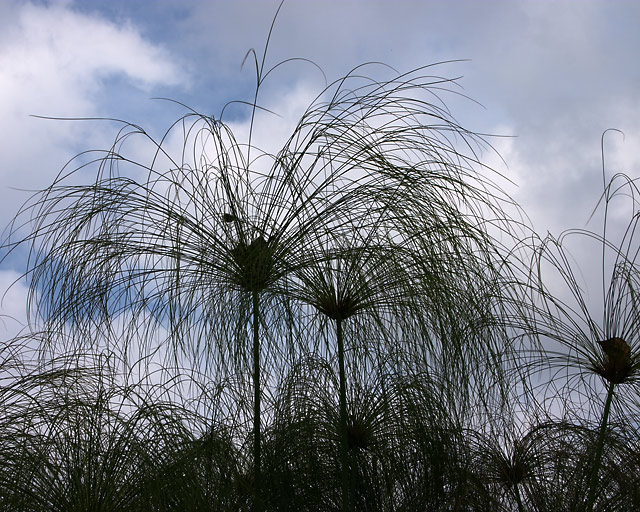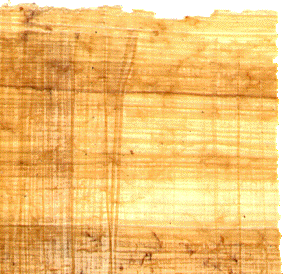
Cyperus papyrus. Source: Wikipedia.de s.v.

Cyperus papyrus. Source: Wikipedia.de s.v.
The Greek word pápyros designates the plant Cyperus papyrus, a wetland sedge that was once abundant in the Nile delta. It is often traced back to a putative Egyptian source pa pr-'3 ‘property of the pharao’, which, however, never occurs in the Egyptian sources (despite the fact that Egyptian has a wealth of words to designate papyrus in all of its forms). The Greek word later comes to designate the writing material produced from the plant. From it derives our word paper.

Source: www.artlex.com
The papyrus plant can reach a height of 3m. The pith of its stalk is cut into thin strips about 40cm long and up to 4cm wide. These are laid out in parallel, lightly overlapping each other, and a second layer is laid on top at a right angle. The set is then pressed and hammered. The sap coming out glues the stripes together to a sheet. The sheets are smoothened and glued together into scrolls in such a way that plant fibres run transversely on the inner side of the roll. This side is then written upon, originally with a brush, from Hellenistic times on with a reed pen. Ink is produced from soot.

Part of the Book of the Dead of Ani. Source: http://www.stephan-selle.de/Lesefruchte/Alexandria/graph/papyrus.gif
Papyrus was used first by the Egyptians, then by the Greek, the Romans and in all of Europe as the primary – since cheapest – writing material. Over a long period, Egypt had a state monopoly on its production. Papyrus is, however, not very durable; ancient exemplars have survived into our time only under favorable circumstances. In the early Middle Ages, papyrus is replaced by the more durable parchment. Later again, the word paper is applied to the writing material invented in China and imported from there.